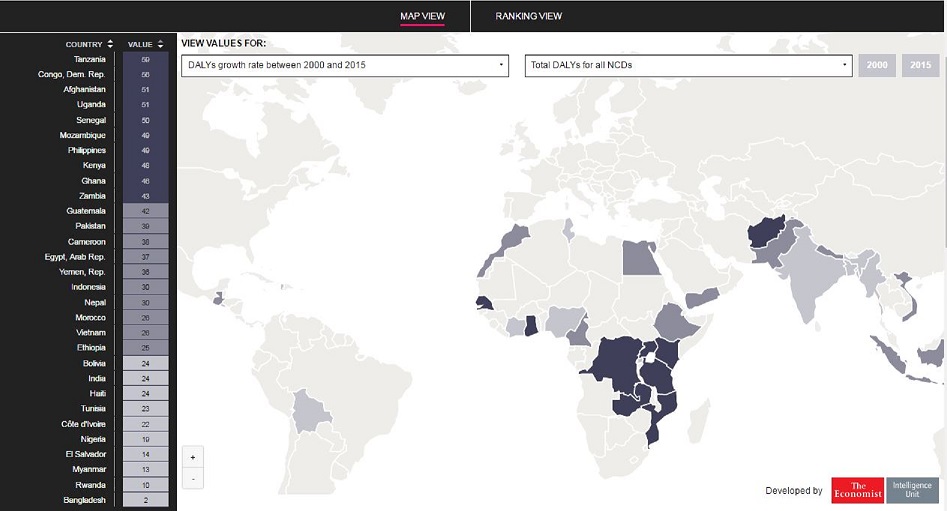Non-communicable diseases (NCDs) such as cardiovascular disease, cancer, mental illness, diabetes and chronic respiratory disorders are posing a growing threat to healthcare systems in developing countries. This is highlighted in a recent report by The Economist Intelligence Unit (EIU), The next pandemic? Non-communicable diseases in developing countries, commissioned by the International Federation of Pharmaceutical Manufacturers and Associations (IFPMA) on behalf of Access Accelerated, an initiative to address the NCD burden.
Rising disease burden
According to data from the Institute for Health Metrics and Evaluation, NCDs account for over half of the overall disease burden in lower-middle-income countries, and close to one-third in low-income countries. The evidence shows that, in absolute terms, this burden increased by nearly 30% between 2000 and 2015 and impacts people at a younger age than in wealthier countries, exacerbating social and economic costs. Cardiovascular disease is the main contributor to the increase.
Existing healthcare systems in developing countries are ill-equipped to manage this rising burden. Challenges include insufficient access to medical care and to healthcare facilities and professionals, but also policy weaknesses. Developing countries also face an acute financing constraint for healthcare in general, and for NCDs in particular. On a per-capita basis, total spending on healthcare in low-income countries amounts to less than 1% of the expenditure of high-income countries, and in lower-middle-income countries it amounts to less than 2%. Out-of-pocket expenditure still represents the largest proportion of spending in developing countries, exposing most households to catastrophic healthcare expenditure.
No “one-size-fits-all” solution
In order to address the challenges, health awareness programmes, urban planning that facilitates physical activity, and taxation strategies that seek to reduce demand for tobacco are all good starting points, but there is no “one-size-fits-all” solution. Countries need to develop policy frameworks that reflect the national burden of disease, funding constraints and the nature of the healthcare system while also taking cultural factors into account.
Meanwhile, technological and organisational innovations as well as sustained, co-ordinated efforts across multiple stakeholders are required. The healthcare infrastructure developed to address the UN's Millennium Development Goals can be leveraged to face the NCD challenge. For example, there is an opportunity to leverage primary-care clinics established to deliver reproductive, maternal and child health to extend the provision of screening and treatment for cervical cancer and hypertension, as well as patient education programmes. Innovative business models offer the opportunity to create incentives for patients and healthcare providers to pursue prevention programmes. In both cases initiatives are in their infancy and warrant scaling up, an effort that will require financing.
The EIU has developed a data visualisation tool that highlights the growing NCD burden in developing countries. The data viz tool and the full report can be accessed here.
The views and opinions expressed in this article are those of the authors and do not necessarily reflect the views of The Economist Intelligence Unit Limited (EIU) or any other member of The Economist Group. The Economist Group (including the EIU) cannot accept any responsibility or liability for reliance by any person on this article or any of the information, opinions or conclusions set out in the article.





